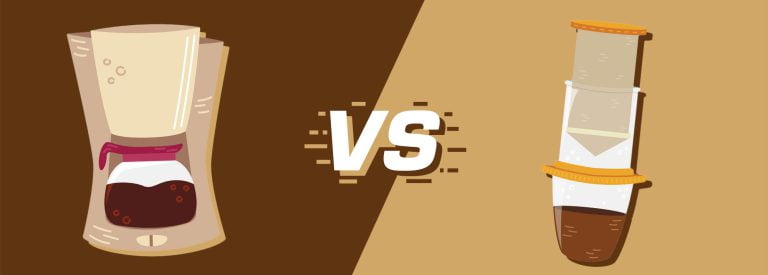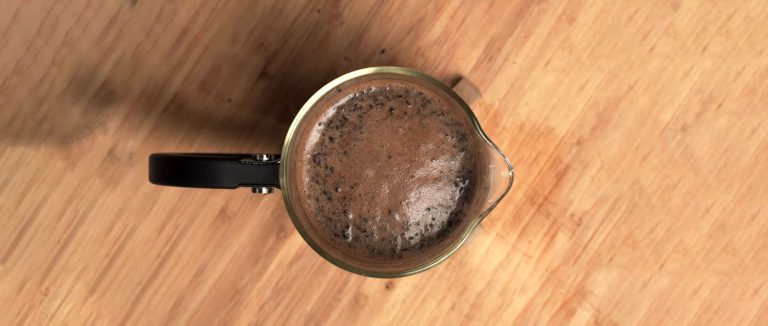Coffee vs French Press: What Makes Them Different?
I have had many friends who were just starting out with brewing coffee ask which is better, “The classic coffee made by a drip machine or the manual French press coffee?”
Whether you’re a budding brewer like them or just want to explore more ways to make coffee, I’ll be answering this question in this comparison of the drip coffee machine and the French press.
After reading through, you’ll be able to make an informed decision on which brewer will be better for you, so ready your mug and let’s get started.
Comparing Drip Coffee & French Press

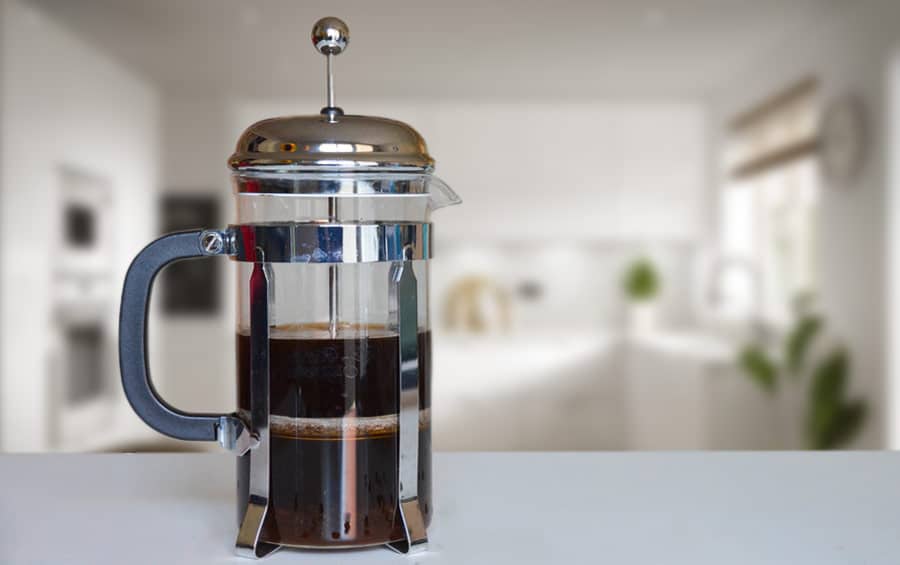
Making drip coffee is a simple and straightforward process. An automatic drip machine pours hot water over ground coffee beans, allowing the delicious liquid to slowly filter through into a carafe. The beauty of this method lies in its convenience; you can set up the machine before bed and wake up to a fresh pot of brewed coffee waiting for you.
On the other hand, French press brewing takes a bit more time and effort but yields an equally satisfying result. A cylindrical glass or stainless steel container is used for immersion brewing, where the grounds are fully submerged in brewing water for an extended period of time. Once ready, a metal mesh screen attached to the plunger filters out the grounds, leaving behind richly flavored coffee.
Here are the factors to consider when picking between the two brewing methods, followed by a detailed comparison of each feature:
| Features | Drip Coffee | French Press |
|---|---|---|
| Taste & Flavor | Simple and smooth taste, can be strong and bold in flavor | Rich and full-bodied, medium to strong intensity |
| Strength | Can be adjusted by modifying coffee-to-water ratio and roast level | Produces a heavy body and robust taste |
| Ease of Use | Hassle-free and automated process | Requires some attention and knowledge |
| Brewing Speed | Around 5 to 10 minutes | Around 6 to 7 minutes |
| Versatility | Limited control over the brewing process | Some control over steeping time, temperature, and grind size |
| Durability & Portability | Not designed to be portable, comes in various sizes and materials | Portable option available with steel models, compact design |
| Sustainability | Relatively unsustainable due to electricity consumption and disposable filters | Eco-friendly, doesn’t use electricity, recyclable materials |
| Cost | Affordable, low-quality models start at $25, high-quality models are more expensive | Affordable, starting at around $20, prices vary with size and materials |
Taste, Flavor, & Strength
Discussing the taste and strength of drip coffee, I find that it’s simple yet smooth. The coffee can be strong and bold in flavor but still remains tasty without being overwhelming on the palate. You can also alter its strength by modifying the coffee-to-water ratio and the beans’ roast level.
Meanwhile, a French press produces a rich and full-bodied coffee with medium intensity. Since the process involves immersing coffee grounds in water for an extended period, it creates a heavier body and robust taste. However, due to its metal mesh filtration system, French press coffee contains more oils and sediments than other methods.
The better brewing method depends on the drinker’s preference, but for me, the French press yields a tastier cup than a basic drip machine, thanks to the more pronounced flavors created by the immersion process.
But if you have a high-end drip machine like this Breville/Sage Precision Brewer, I would favor that over the French press.
Ease of Use
So, which brewing method is easier to handle? Let’s take a look at the two coffee makers.
Drip coffee is known for its straightforward and streamlined brewing process. It’s a hassle-free and automated process where you just have to get the variables right, such as using medium-coarse ground coffee and keeping the water temperature at 195°F to 205°F. You choose the filter (such as paper, metal, or cloth filters), and push the button and wait for your coffee to drip.

French press requires minimal effort but more attention than drip coffee. This immersion technique involves steeping medium-coarse to coarse-ground coffee beans in hot water at the same temperature as a drip coffee. You then press the plunger to filter your coffee out. While this procedure may sound simple enough, achieving the right grind size and water temperature balance can be tricky without experience or knowledge.
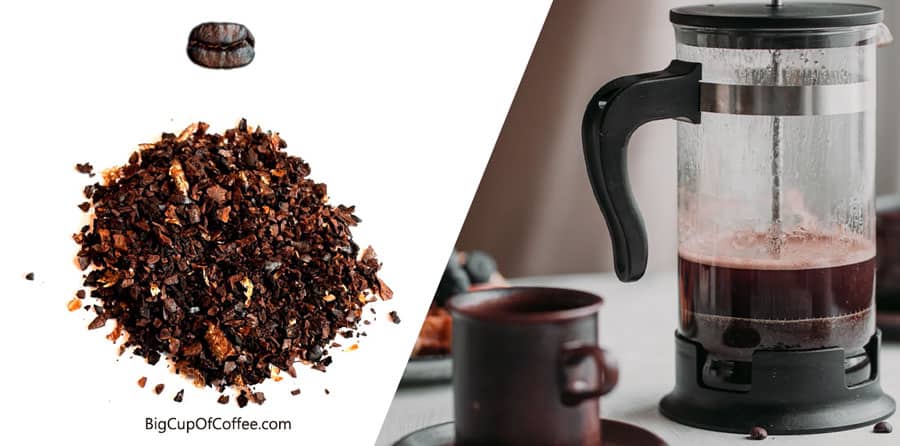
Overall, while both methods are quite user-friendly, the drip coffee machine takes the cake here because of its automated system. Unlike the French press, you don’t have to worry about the timing and pressure when you’re pushing down the plunger of your coffee maker.
Brewing Speed
Now let’s get to the speed of each brewer. With the drip method, you can expect a total time of around 5 to 10 minutes from grinding your beans to brewing and cleaning up. Cleaning your drip coffee maker can also be a bit time-consuming since it has removable parts you have to wipe and rinse.
Then there’s the French press which takes about 6 to 7 minutes from preparation to tidying up. It also takes some time to clean up a French press because it requires some disassembly before you can scrub out the grounds but overall it isn’t too difficult or labor-intensive.
To summarize, we can consider the French press as the faster brewer in general, but the two brewers’ speeds are pretty close to each other so for me, this category isn’t much of a dealbreaker for the drip machine.
Versatility
It is important to consider versatility in your coffee maker because it allows you to customize the resulting brew based on your preference.
Drip coffee makers offer little control over the brewing process. You can only adjust the water-to-coffee ratio and the brewing time while the other factors are controlled by the machine. There are also innovative drip coffee makers like the precision brewers from Breville and Sage where users can tweak various aspects and make specialty beverages.
The French press also gives you limited control, as it can only make a single type of hot coffee, except if you use it for cold brew. Still, it offers more customization than drip coffee since you have some control over the steeping time, temperature, and grind size.
In terms of sizes, it has four options:
- 3-cup (0.35 L)
- 4-cup (0.5 L)
- 8-cup (1 L)
- 12-cup (1.5 L)
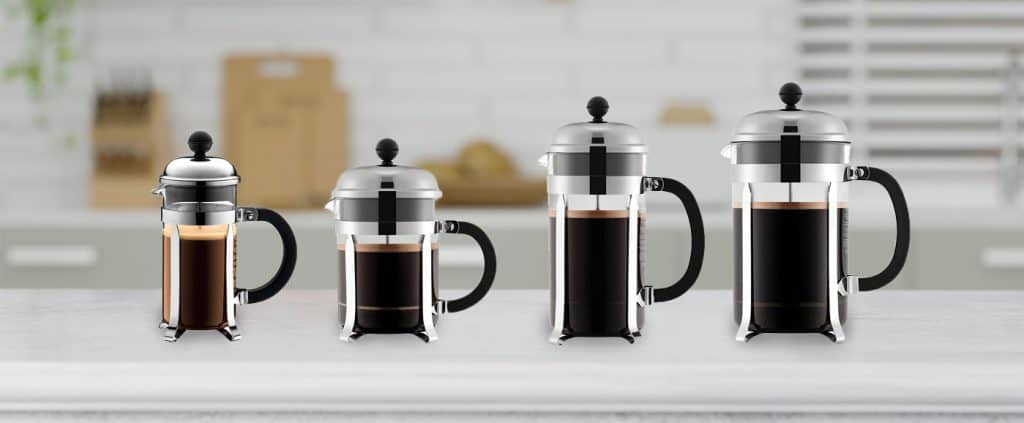
A drip coffee machine has more capacity options you can choose from, which can cater to different needs from a solo cup to larger batches:
- 4-Cup
- 6-Cup
- 8-Cup
- 10-Cup
- 12-Cup
- 14-Cup
The drip coffee machine and French press are not the most versatile coffee makers out there, but if it comes down to these two methods, I would say that the French press wins this round. It has various capacity options that do no need to be maxed out, but you can play with the coffee brewing variables more.
Durability and Portability
Will your coffee maker last long? The French press is commonly made with glass making it prone to breakage. But it also has steel models that can really last long. Since the French press has a compact design, it is more portable than a drip machine.

The quality and durability of drip coffee makers varies wildly. You have super cheap and expensive machines in this category, and quality really follows the price of the unit here. They are made with a combination of materials like plastic, steel, and glass for the carafe. They are not a portable option, as they’re designed as a kitchen appliance, that is to stay in your kitchen.
So if you’re seeking a coffee maker that can survive some drops and being tossed around in your bag, then the steel French press is your best bet. I can vouch for it since I have a friend who has been using his for years now and it still delivers delicious coffee, despite having a few dents and scratches.
Sustainability
Coffee’s sustainability is often overlooked, but it is important because it makes sure that this delicious beverage can be enjoyed by future generations without leaving significant damage to the environment.
Drip coffee makers consume a considerable amount of electricity and materials, making them relatively unsustainable when compared to other brewing methods. It also uses disposable filters which can generate waste, but you also have the choice of using compostable paper filters or reusing cloth and metal filters.
It’s also worth noting that low-quality drip machines are made from cheap materials, which can lead to shorter lifespans and further contribute to landfill waste.
On the contrary, French press is very eco-friendly because it doesn’t use electricity, and has a built-in metal filter. The only negative with French press in this regard is that it’s yield is smaller than other brewing methods, since you never wait for the last drop to exit the wet grinds.
If you also prefer a guiltless brew with a minimized carbon footprint, then the French press wins over the drip machine, hands down. And you can make your coffee even more eco-friendly by using shade grown coffee and recycling your used coffee grounds.
Cost
If you have a tight budget, then worry not because both brewers are pretty affordable.
Drip coffee machines can be found for as low as $25, and while tempting at that price point, you get what you pay for in terms of quality. High-quality drip coffee makers will run into hundreds of dollars but offer operational longevity and better build quality overall.
French presses are generally more affordable, starting at around $20 and going up to a hundred dollars depending on the size and materials used. Unlike drip coffee machines, a French press does not use disposable filters which can also save you money in the long run.
Drip Coffee and French Press – Weighing the Pros & Cons
Now that we’ve gotten a closer look at the features of each brewing method, here’s a quick overview of the pros and cons of drip Coffee and French press so you can finally decide which one is for you:
| Brewing Method | Pros | Cons |
|---|---|---|
| Drip Coffee | – Quick and convenient to use – Affordable for an electric brewer – Does not require your attention when brewing | – Less control over the brewing process – Not portable – The use of electricity is not eco-friendly |
| French Press | – Easy to use – The glass material offers decent heat retention – Stainless steel models offer durability | – Some sediments may get into your drink – Common glass build is prone to breakage |
You can also read my other comparison articles between drip coffee and these methods:
You can also check out how the French press compares to other brewing methods:
Conclusion
To conclude this brewer showdown, both methods have their strengths and weaknesses. But if I have to declare a winner across the different factors I discussed, then the French press comes out as the better choice. Unless maybe if you get a higher-end specialty drip brewer like this.
While a drip coffee maker is easier to use and more flexible in terms of size, the French press wins in taste, speed, versatility, sustainability, portability, and affordability.
So all things considered, which coffee maker do you like better? Let me know in the comments below.




